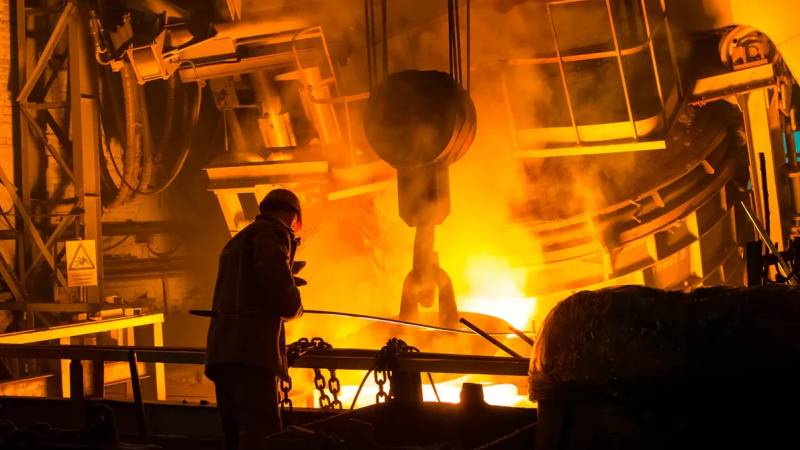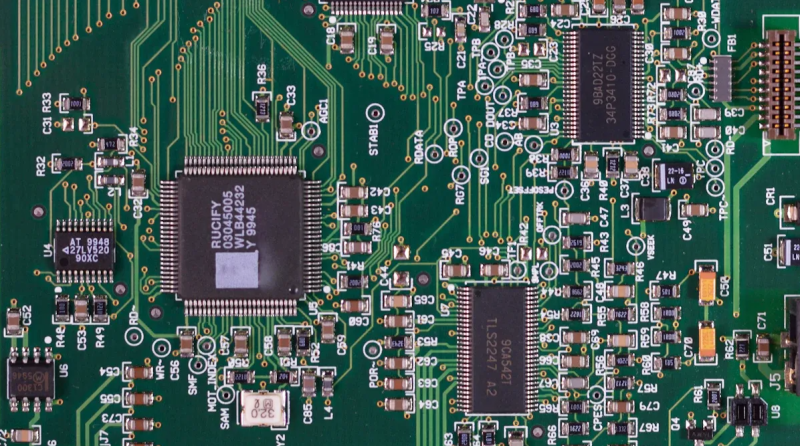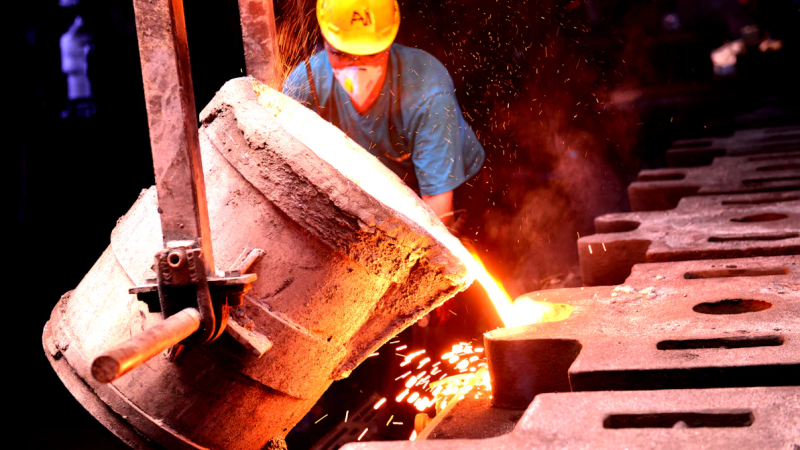

When you use an induction heating machine, you see how magnetic fields can heat metals without touching them. Think of it like a microwave oven, but for metal things. The induction heating coil makes a strong magnetic field. This field makes the metal get hot fast and evenly.
Induction heating works up to 90% efficiency, which is much better than old heating methods.
You can heat metal parts to over 1000ºC in less than one second. This helps save time in each cycle.
The fast heating means you can make more products and have less waiting.
Induction heating gives you exact, quick, and clean heating every time. Canroon is a leader in induction heating technology. They help you get good and steady results.
Key Takeaways
Induction heating machines use magnetic fields to heat metals fast. This saves time and energy for workers.
Eddy currents form when the magnetic field changes. These currents heat the metal from inside. This helps control the temperature very well.
The skin effect puts most heat near the metal’s surface. This is good for jobs like surface hardening.
Induction heating is safer and cleaner than old methods. It makes less waste and fewer emissions.
Canroon has advanced induction heating machines. These machines help work go faster and safer. They also give better control and efficiency.
Induction Heating Science
Electromagnetic Induction
Electromagnetic induction is the main idea behind induction heating. When an alternating current goes through a coil, it makes a magnetic field that changes. This magnetic field spreads out from the coil and reaches the metal you want to heat. The changing field pushes small electric currents inside the metal. These are called eddy currents. Induction heating uses this to heat metals fast and safely. You do not need a flame or to touch the metal. The coil works like a strong magnet and sends energy into the metal.
Tip: Think about moving a magnet near paper clips. The clips move even if you do not touch them. In induction heating, the magnetic field sends energy into the metal and heats it from the inside.
Eddy Currents
When you put a metal object in the coil, the coil’s magnetic field makes eddy currents spin inside the metal. These currents move in circles, like water in a whirlpool. As they move, they hit resistance in the metal. This resistance turns the energy into heat. Induction heating uses these eddy currents to warm the metal fast and evenly. A stronger magnetic field makes stronger eddy currents and faster heating. The kind of metal and the magnetic field’s frequency also change how deep and fast the heating is.
Eddy currents start in the metal when the magnetic field changes fast.
These currents make heat because of resistance, called Joule heating.
The heating depends on the metal and the magnetic field’s strength.
Skin Effect
The skin effect helps induction heating work better. When the magnetic field changes very fast, eddy currents stay close to the metal’s surface. This means most of the heat is near the outside of the metal. If you use a higher frequency, the skin effect is stronger and the heat is even more focused on the surface. This is good for jobs like surface hardening, where you want the outside hot but the inside cooler. The skin effect saves energy and gives you exact results with induction heating.
The skin effect keeps eddy currents near the surface and makes heating better.
Higher frequency means a thinner skin depth and more focused heat.
Induction heating uses the skin effect to heat metals fast and with less wasted energy.
Induction Heating Machine Components

An induction heating machine has many important parts. These parts work together to heat metals fast and well. Each part has a special job in the heating process.
Coil and Magnetic Field
The coil is the most important part of the machine. When electricity goes through the coil, it makes a strong magnetic field. This field wraps around the coil and touches the metal you want to heat. The coil’s shape and size are very important. If you change the coil’s shape or move it closer to the metal, the magnetic field changes too.
The coil’s shape, frequency, and how close it is to the metal all change the heating.
The coil needs to match well with the workpiece for the best heating.
The skin effect keeps most heat near the surface and depends on the frequency.
Tip: If you design the coil well, you can control where and how much heat you use.
Power Source
The power source gives energy to the machine. It changes normal electricity into the kind needed for induction heating. Most machines use a rectification part to turn AC into DC. Then, a converter changes DC into high-frequency AC. This high-frequency current heats metal fast and evenly. The table below shows the main parts and what they do:
You can pick high-frequency or low-frequency power sources. High-frequency induction heating lets you control the temperature well and is good for small or thin parts. Low-frequency induction heating is better for heating deep inside big workpieces.
Workpiece Interaction
The workpiece is the metal you want to heat. When you put it inside the coil, the magnetic field makes eddy currents in the metal. These currents make heat right where you need it. If the coil is closer to the workpiece, the heating is stronger. Induction heating only heats the metal, so you save energy and get faster results.
Heat forms inside the workpiece, not outside it.
Eddy currents make friction, which heats the metal fast.
You can heat certain spots for special jobs.
Canroon makes induction heating machines with smart features. You get safe and clean heating with no flames or bad fumes. Their machines use modular designs, easy controls, and advanced power systems. You can use them for many jobs, like welding or coating. Canroon’s new ideas help you work faster, safer, and get better results.
How Induction Heating Works
Energy Transfer
When you use an induction heating machine, the coil starts the process. The coil makes a changing magnetic field. This field goes around the metal workpiece. As the field changes, it pushes eddy currents inside the metal. The metal resists these currents, so it heats up. You can see the metal get hot fast and evenly.
The induction coil makes a changing magnetic field.
This field heats the workpiece by Joule Heating.
Magnetic hysteresis adds more heat in magnetic metals.
The way the induction heating system is built affects how well energy moves from the coil to the metal. If the system is designed well, you get fast and efficient heating. You do not need to touch the metal, so the work area stays clean.
Heat Generation
How fast the metal heats up depends on many things. You need to think about the type of metal, its size, and its shape. Different metals heat at different speeds. For example, copper and aluminum heat up quickly, but they need different amounts of energy. The frequency and strength of the current also matter. Higher frequencies heat the surface more, while lower ones heat deeper. The distance between the coil and the workpiece changes the heat. If the coil is close, you get more heat, but you must be careful not to overheat.
Material properties: Each metal has its own features.
Size and shape: Bigger or thicker pieces need more energy and time.
Frequency of current: Higher frequencies heat the surface more.
Intensity of current: More current means more heat.
Distance: Closer coils give stronger heating, but you must watch the temperature.
Here is a table that shows how different metals heat up with induction heating:
You can see that each metal gets to a different temperature and uses a different amount of energy. This helps you pick the right settings for your job.
Efficiency
Induction heating is very efficient. You can save up to 30% more energy than with old heating methods like gas or electric resistance. The technology gives you quick and exact heating, so you save time and money. Induction heating turns electricity into heat better than laser heating. You get more heat from the same amount of electricity.
Induction heating uses less energy and saves money.
You get fast and accurate temperature control.
The process makes less waste and fewer emissions.
Here is a table that compares induction heating machines and traditional heating methods:
Induction heating machines help keep you safe. New machines have shields to lower exposure to electromagnetic fields. Emergency shut-off systems let you stop the machine quickly if needed. You should wear heat-resistant gloves and safety goggles to protect yourself from burns and splashes. Good ventilation systems remove bad fumes, so you always have clean air.
Tip: Induction heating works best when you set up the system for your needs. You get high efficiency, fast heating, and a safer place to work.
Applications

Industrial Uses
Induction heating is used in many factories. It heats metal parts fast and clean. You can use it for joining and testing metals. Here is a table that shows common uses and what they do:
Induction heating gives you many benefits. You can control the heat and save energy. It helps keep your workplace safe. You make less waste and help the environment.
How Induction Stoves Work
Induction stoves help you cook food quickly and safely. They use magnetic fields to heat pots and pans. When you turn on the stove, electricity goes through a coil. This makes a changing magnetic field. The field makes eddy currents in the pan, which heats it up. Only the pan gets hot, not the stove.
Induction cooking lets you control the temperature easily.
You save energy because heat goes right to the pan.
You need special pots and pans for induction stoves. Good choices are carbon steel, cast iron, ceramic, non-stick, and stainless steel.
Induction stoves work better than gas or electric stoves. You use less energy and cook faster. Your kitchen stays cooler and safer.
Future Trends
Induction heating will be used in more places soon. New ideas include using green energy, smart sensors, and AI for better control. Companies make smaller and flexible machines for different jobs. You can watch the process in real time and fix problems faster.
Canroon is a leader in these new changes. They make smart induction heating machines with robot arms. You can set heating plans, positions, and times with smart controls. Their machines help with welding, brazing, and quenching. This makes your work easier and faster.
Note: Induction heating is growing. You will see it used in factories, homes, and green energy.
You can see induction heating machines heat metals fast and safely. They use magnetic fields to do this job. The process has three main ideas:
Electromagnetic induction makes heat inside the metal.
Eddy currents create Joule heating.
Hysteresis gives extra heat in magnetic metals.
Induction heating saves energy and lets you control temperature well. It also makes your workspace safer. You spend less money and the machines are quiet. Canroon is a top company in industrial automation. They offer smart machines with advanced controls. If you pick induction heating, think about these things:
Tip: Induction heating helps you work faster and safer in many industries.
FAQ
How do you control the temperature in induction heating?
You change the power and frequency on the machine. The system lets you pick the heat level you want. This helps you control the heating very well.
Can you control which part of the metal gets heated?
Yes, you can change the coil’s shape and where it sits. Put the coil near the spot you want to heat. This way, you heat only the area you need.
Why is control important in induction heating?
Control helps you get the right temperature for each job. You stop the metal from getting too hot or too cold. Good control saves energy and makes better products.
What safety features help you control the induction heating process?
New machines use sensors and digital controls. You can set limits and watch the process. Emergency shut-off buttons help keep you safe.
How does Canroon help you control induction heating?
Canroon gives you machines with smart control systems. You use panels to set heating plans and check progress. Their technology lets you control time, temperature, and power.
Previous:
Next:
Sign up for updates
